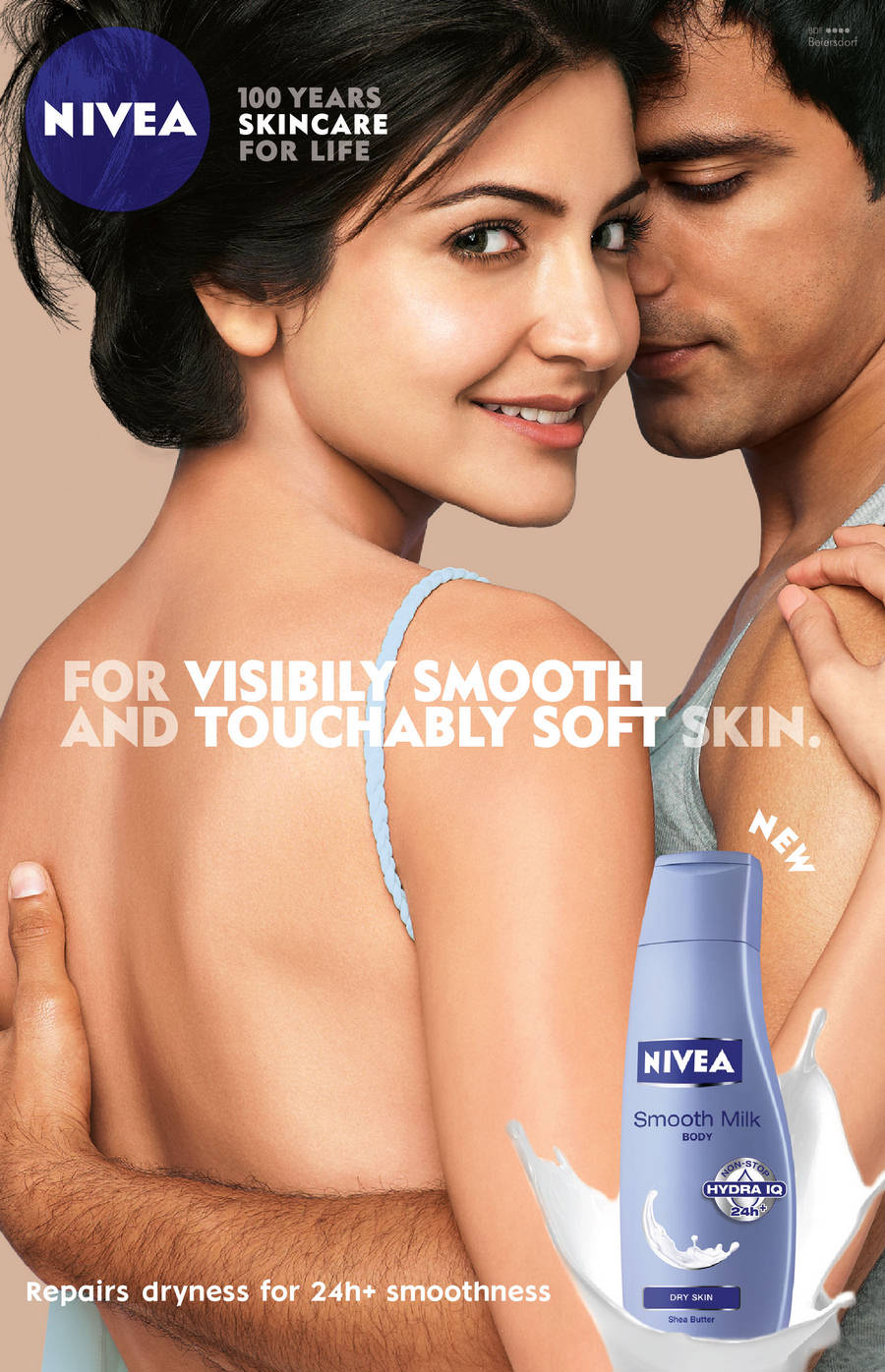Context Blog Post
The ad that was analyzed in class with my peers, Sami and Zina is the Nivea "100 years skincare for life" in collaboration with Bollywood actress Anushka Sharma.
As established through the analysis in class, the audience is geared towards women, primarily young woman. The reason why any "composer" would sell a beauty product or use the need for aesthetic sensation is to have the viewer think of their own appearance and have them desire to look "better", and in most cases, "attractive". What is attractive and what is not is defined through societal and cultural standards. For this ad, these standards are followed and further implied, into the subconscious of young and naive women, through the use of the main subject: Anushka Sharma. Through image manipulation, the composer was able to present Sharma with no flaws, such as pimples on the face, and perfect her attractive features; making her as attractive as possible. The issue with is due to the fact no real device can manipulate your features in real life as a computer can in an image. This can (and has done) negatively impact the easily influenced young women, as they will never be able to reach the "perfection" that Anushka is presented in. This is emphasized even further when a social stigma is created and manifests in the subconscious of the young women. This social stigma can be very harmful because it acts as a cycle of negativity: You try to reach some form of perfection, you fail, so you face mental issues and issues within your community, so you work harder, and thus the cycle repeats. Furthermore, the reason these impressionable young women are not able to escape this cycle of negativity due to it being marketed throughout the world: from the obvious, beauty markets, to the more subtle, tv shows and movies. So with this advertisement specifically, they use the Bollywood actress as the credible source that should be followed and copied. Ultimately, the ad implicitly uses ethos as a way to manipulate and persuade its impressionable target and young audience to buy their product, and subsequently, the social stigma of beauty is reinforced and used to the company's benefit as a by-product.

Comments
Post a Comment